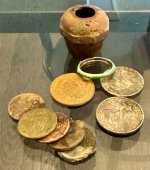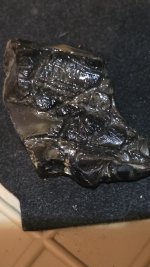ivan salis
Gold Member
- Feb 5, 2007
- 16,794
- 3,809
- 🏆 Honorable Mentions:
- 1
- Detector(s) used
- delta 4000 / ace 250 - used BH and many others too
GOHO the one vessel of the three later accounted for was the Concepcion * some of her crew members were found after floating on a hatch cover a couple of days --near the cape * -- so 3 broke away origionally -- and the rough where abouts of 1 and that she sank was found out -- so the Concepcion was accounted for -- that still left 2 totally unaccounted for * the tabbaco hauler --San Miguel and the french prize vessel (aka) EL Ciervo
type in "old spanish league" and you will see the figure 2.6 miles --its a very very old measure -- going back to roman times ( it was how far a full loaded roman "legion" was expected to march in a hour) -- while it was outawed offically by the king of spain for offical use long before 1715 --it was often still commonly used by the spanish in south american colonies (for land measuring) and by sailors .
its why lots of folks link the about 40 miles ( english report)and the 15 leagues ( spanish reprt --39 miles at 2.6 miles) together
I glad you see that Leeward is a wind direction --and with SE the most common wind direction normally * its highly possible , that the direction salmon was speaking of when he said "leeward" is not north but actually south.
thus the 2 accounts might be speaking of totally differant wrecks , rather than the same one.
type in "old spanish league" and you will see the figure 2.6 miles --its a very very old measure -- going back to roman times ( it was how far a full loaded roman "legion" was expected to march in a hour) -- while it was outawed offically by the king of spain for offical use long before 1715 --it was often still commonly used by the spanish in south american colonies (for land measuring) and by sailors .
its why lots of folks link the about 40 miles ( english report)and the 15 leagues ( spanish reprt --39 miles at 2.6 miles) together
I glad you see that Leeward is a wind direction --and with SE the most common wind direction normally * its highly possible , that the direction salmon was speaking of when he said "leeward" is not north but actually south.
thus the 2 accounts might be speaking of totally differant wrecks , rather than the same one.



 Working on it
Working on it 


